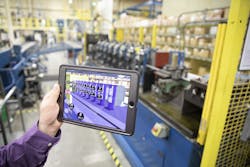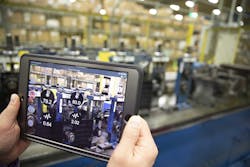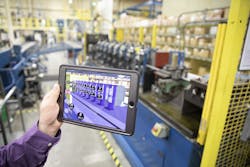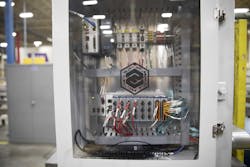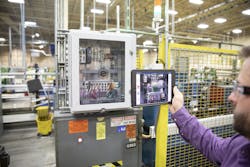The widespread adoption of predictive maintenance (PdM) technologies is a testament to the early adopters who pioneered their use in industrial applications. These technologies transformed the way we think about maintenance by providing the ability to ascertain the health of an asset without interfering with its operation. This new way of thinking allowed industrial facilities to reduce unplanned downtime by identifying faults or degradation early in their progression. In comparison to time-based strategies, significant financial benefits can be realized with predictive or condition-based technologies.
The Industrial Internet of Things (IIoT) is poised to transform how we think about maintenance and operations once again. The prevalence and declining cost of sensors, wireless connectivity, the ability to quickly analyze data, etc. are all contributing to this trend. As with any emerging technology, it is necessary to separate the excitement from the commercial viability. Simply providing more data or generating data more frequently will likely not have the financial benefits to justify the expenditure.
The true power of data resides in how it is used by humans. Since we operate in the physical world, the value of all that data can be better realized if the data is converged with the physical world.
Converging the digital and physical worlds through augmented reality offers maintenance teams a real-time look at equipment operations. (Courtesy: Regal Beloit)
Defining Augmented Reality
Augmented reality (AR) overlays relevant digital content into the physical world through the lens of smart devices such as mobile phones, tablets, or wearable glasses. This “new” technology has been in use for many years in a variety of industries ranging from entertainment to aerospace. Significant investments in AR-capable hardware and software development tools continue to be drivers in the expanding use of AR, with spending estimated to reach $63 billion by 2021.
There are several aspects of AR which make it a powerful tool for industrial facilities. By combining real-world and digital content, the need to sort through disparate databases to understand the condition of equipment is alleviated. The digital information is not only displayed in real time, but also is interactive. This reduces the time to diagnose issues, communicate and schedule corrective actions with other personnel, identify viable spare parts, and perform other tasks. The digital information also is bound to the physical object in three-dimensional space, allowing people to stay connected with the relevant digital information while moving within the physical space in a facility.
In maintenance, digital content overlaid into a worker’s physical world might include real-time machine data, a bill of materials with availability information, animated repair or inspection instructions, and the ability to connect to remote expertise within the enterprise or from third-party suppliers. It is a tool that, once configured for the application, can quickly make technicians and engineers effective at a variety of maintenance tasks, reducing onboarding time and skills gaps with new hires.
The augmented reality panel can show temperature, vibrating and other readings. (Courtesy: Regal Beloit)
Precision Maintenance
Understanding why and how equipment fails is an important step in managing assets proactively.
Although identifying equipment faults and degradation is important, industrial facilities that adopt proactive approaches to their asset management strategies help drive down or mitigate future issues.
The traditional thinking is that the probability of equipment failure increases as the equipment ages and wears out. However, studies show only 11% of failures are age-related. The reality of equipment failure is that the overwhelming majority of failures are the result of infant mortality or occur randomly. Many equipment failures are the result of installation errors, improper repairs, and intrusive preventive maintenance tasks that can introduce faults into the equipment. Many of these can be overcome by employing precision maintenance practices initiated by training, ensuring compliance through audits, and verifying with measurements.
These practices include, but are not limited to:
- Performing precise shaft alignment with base preparation, proper shimming and correcting soft foot, pipe strain, thermal growth, etc.
- Performing balancing of components, sub-assemblies, and assemblies as required by equipment specifications
- Detailed procedures for installation/assembly, removal, and maintenance activities which will ensure the balance integrity
- Management of lubrication standards
- Selecting the correct tool for each step and maintaining relevant calibration of those tools
- Tightening all fasteners with calibrated tooling in a progressive manner to the final specification
- Performing baseline measurements at equipment startup for relevant machine parameters (vibration, temperature, torque, etc.)
A control panel (left) can be examined without opening the cabinet through the use of augmented reality. (Courtesy: Regal Beloit)
Implementing AR for Proactive Maintenance
It is imperative that any deployment begin with a business case focused on improving performance, reliability, and/or operational efficiencies. It is just as important to focus the deployment on how people interact with the information and can do so effectively and efficiently. Simply providing more data or data more frequently generally does not yield noticeable improvements to a facility’s bottom line.
It is recommended that the metrics for success be identified and to start with the basics to get some early wins. This may help garner more attention and support within the facility to expand the deployment and further transform the organization.
Because many manufacturing facilities operate in a digital-to-physical mindset (for example, a digital CAD drawing is used to produce a physical good), there is usually a wealth of existing digital content that can be leveraged to create an immersive AR experience. It is recommended that stakeholders and users be involved early in the process so that their experience can assist with the new tools being developed.
For example, AR was deployed on a critical production asset to enable facility maintenance and operation personnel to proactively manage its performance and condition. This roll-forming machine produces guide rail products used in the unit material handling industry. Downtime on this line accounts for a 25% loss of total production. It consists of a series of eight gearboxes with upper- and lower-driven die rollers. The gearing is cantilevered and powered through a worm/spur gear connected in series through a common driveline, powered from a belt driven air clutch assembly for speed control that is belt-driven from an electric motor. Many components on this are unique and have long lead times for replacement.
Failures of the gearing, bearing, and belts forced operations to halt while replacements were located and installed. A condition monitoring system was designed and installed to measure and analyze a variety of machinery health parameters, intended to provide:
- Indication of machine degradation weeks in advance of failure
- Data visualization and conceptualization for maintenance management personnel unfamiliar with vibration waveform and spectral analysis
- Wireless connectivity of the monitoring systems to the server, eliminating the need to run local networking cable to the metal-forming machine
- Automated email/SMS text alerts for changing/abnormal conditions
The data acquisition hardware was installed near the equipment, minimizing cable and conduit runs. The hardware is connected to server-based software installed in the cloud that provides tools for configuration, alert/alarm protocols, trending, analysis, etc. Once the data was secured in the server, it becomes simple to generate an AR experience.
While wearable devices provide a hands-free AR experience, they were not planned to be utilized initially, as most of the interaction was designed for data visualization by the maintenance teams. In the future, additional use cases for training and automated animations of repair sequences will likely require the use of wearable devices.
Vuforia Studio AR created the AR experience, which is initiated by a mobile application; the user scans a physical mark on the enclosure housing the monitoring equipment with a smart device. While the mark can be placed anywhere, this location was chosen so that personnel wanting to visualize the data do not have to interfere with the operating machinery. Since the smart devices use the built-in camera, it is necessary to place the mark in an area with suitable lighting and minimize glare and reflective surfaces.
When deploying AR for field use, there are several other things to consider:
- User location: Determine the position of the person relative to adjacent machinery, as it may affect their ability to incorporate digital information within the physical space. Ensure that the person accessing the AR experience can do so while staying in a safe area.
- Hazardous locations: Ensure that any devices are rated for the locations in which they will be used.
- User type: Assess the technical skill level and provide training on using AR, which is especially important for wearable devices.
- Ergonomics: Determine if the experience intent and the device being utilized are comfortable for the user and do not hinder physical movement.
- Battery life: Determine if the smart device will be used intermittently or for an entire shift. AR experiences tend to quickly drain smart devices and wearables under constant use. Battery life for phones and tablets is typically expected to be in the range of two to three hours.
- Device connectivity: The AR devices will need to be wirelessly connected to a server if real-time sensor data, etc. is to be included in the experience. Wi-Fi or cellular connections are necessary for those use cases.
The maintenance and operations management teams use the information to understand the equipment health and perform maintenance only when the conditions warrant intervention. With the AR experience there are several options for the user, including the real-time data for vibration, temperature, speed, oil condition, dashboards showing overall health, time-series chart to display past trends of machine performance, and options to seek remote assistance from subject matter experts.
AR users can walk around the machine and have the real-time data values tied to the physical component. However, to avoid interference with machine operators, a simple dashboard showing relevant machine conditions was included.
Time series charts for each measured parameter are utilized to see historical trend data, and remote assistance can be accessed with one click to connect to a remotely located expert instantly.
State-based formatting can be enabled to provide users with easy recognition of machine faults and degradation. These fault values should be established with the domain experts, and in this case have already been configured in the server-based analysis software.
Using these technologies, the facility is now better equipped to proactively maintain this machine, eliminating the need for time-based strategies. They also allow simple and quick remote access to a team of subject matter experts who can resolve issues and perform diagnostics without incurring any travel expenses and who also have a higher rate of first-time fixes.
AR experiences can be configured and changed with only a small learning curve.
Much of the software used to develop AR experiences is similar to 3D CAD packages. The deployment of the technologies should be an iterative process, continually building, testing, and receiving feedback and input from different user types. For the metal-forming machine, additional work is planned for connecting the AR experience to the CMMS for automated work order notifications and building animated repair sequences to guide technicians through specific maintenance tasks.
Augmented reality is being used by industrial facilities to enhance data visualization, improve employee training, and enable precision maintenance activities—all empowering facilities to more proactively manage their assets and reduce unnecessary expenses associated with equipment degradation, unplanned failures, and ineffective maintenance strategies.
Dan Phillips is director of reliability and maintenance at Regal Beloit. He can be reached at [email protected].
